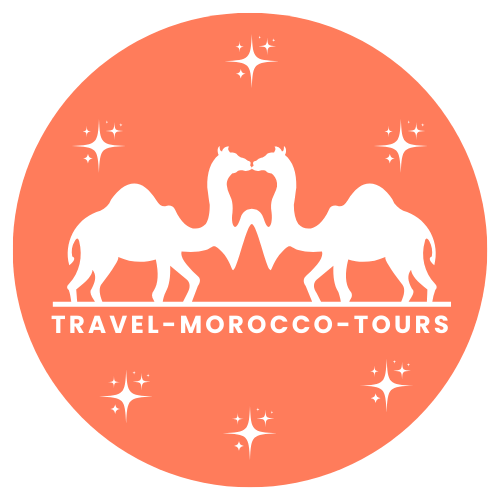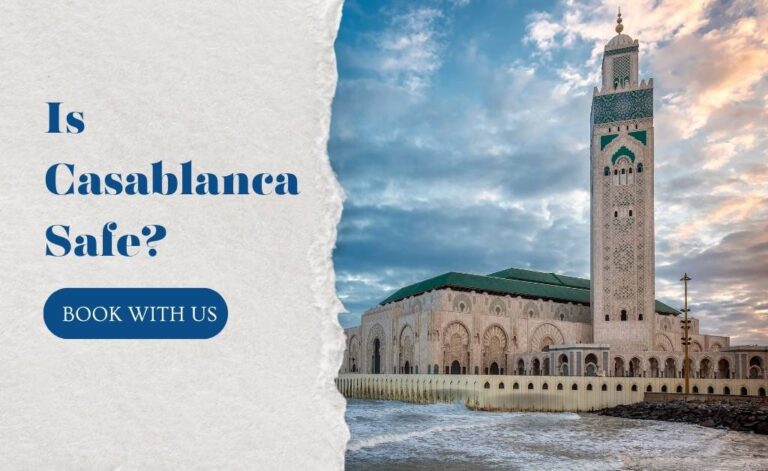Casablanca is a big and exciting city in Morocco. It’s famous for its beautiful buildings, busy markets, and friendly people. One of the best ways to see all that Casablanca has to offer is by using its public transport.
This includes trams, buses, and trains. These systems are easy to use and will help you explore the city without spending too much money.
In this guide, we’ll explain how to use Casablanca’s public transport, what apps can help you navigate, and give you some safety tips. This way, you can enjoy your trip and feel like a local.
Why Public Transport in Casablanca is Your Best Travel Companion
Using public transport in Casablanca is not only cost-effective but also an eco-friendly way to explore the city. Here’s how it compares to taxis and offers environmental benefits:
- Cost Comparison: As of 2024, a single tram ticket costs about 6 MAD (Moroccan dirhams), while a bus ride is similarly priced. In contrast, a short taxi ride can cost between 20 to 50 MAD depending on the distance. For longer journeys, public transport is significantly cheaper.
- Eco-Friendly Perks: Public transport reduces carbon footprints by minimizing the number of vehicles on the road. This is especially important in a city like Casablanca, where traffic can be heavy. By choosing trams or buses, you contribute to a cleaner environment and help reduce air pollution.
Casablanca’s Public Transport Network: A Complete Breakdown
1. The Modern Tramway:
Casablanca’s tramway system is modern and efficient, making it an ideal way to visit key attractions:
- Routes & Stops: The tram network includes two main lines, T1 and T2. T1 connects key areas like the Hassan II Mosque, Casa Port, and major shopping hubs. T2 extends further into residential areas but also serves important commercial districts. Both lines offer easy access to popular spots.
- Tickets & Hours: Tickets can be purchased from vending machines at tram stops or from vendors. The tram operates from 6 AM to 11 PM, with night services available until closing time. Future expansions aim to increase coverage and frequency.
- Local Secret: To avoid crowds, consider traveling after 9 AM on weekdays. This allows you to enjoy a smoother ride and quicker access to popular destinations.
2. Buses:
Buses are another affordable option for getting around Casablanca:
- Top Tourist Routes: Bus #10 takes you to Ain Diab Beach, a popular spot for both locals and tourists. Bus #90 connects you to the Central Market, where you can experience the vibrant local culture.
- Payment Hacks: Using a reloadable “Casa Bus” card is convenient and saves you from needing exact change. You can purchase these cards at major bus stations or from vendors.
- Language Tips: When using buses, it’s helpful to know basic French or Arabic phrases to communicate with drivers. For example, saying “Je veux descendre ici” (I want to get off here) in French can be useful.
3. Petit Taxis:
Petit taxis are small, red and white vehicles that offer quick rides around the city:
- Fair Fares: Taxis use meters, but for short distances, you might negotiate a fixed rate. For example, a ride from the Medina to the Corniche might cost between 25 to 30 MAD.
- Safety: Always ensure you’re using a licensed taxi, identifiable by their red and white color. Avoid scams by agreeing on a fare before starting your journey.
4. Trains:
Trains are ideal for exploring beyond Casablanca:
- ONCF Routes: The national railway company, ONCF, offers routes to major cities like Rabat (about 1 hour away) and Marrakech (approximately 2.5 hours). The high-speed train, Al Boraq, connects Casablanca to Tangier.
- Tour Connection: Consider linking your train journey with guided day tours for a hassle-free adventure. This way, you can explore Rabat’s Kasbah or Marrakech’s vibrant souks without worrying about logistics.
Apps & Tech Tools to Navigate Like a Pro
1. Moovit vs. Google Maps: Which Works Best in Casablanca?
Both Moovit and Google Maps are useful for navigating Casablanca’s public transport:
- Real-time Updates: Moovit provides accurate real-time updates for tram and bus schedules, helping you plan your journey efficiently. Google Maps also offers this feature but might not always have the latest schedules.
- Offline Maps: Google Maps allows you to download maps for offline use, which can be handy in areas with poor internet connectivity.
2. Ride-Hailing Apps: InDrive vs. Careem
Ride-hailing apps are another convenient option:
- Price Comparisons: InDrive and Careem offer competitive pricing, often cheaper than traditional taxis for short distances. However, prices can surge during peak hours.
- Safety Features: Both apps provide safety features, such as live tracking and emergency buttons, which are especially beneficial for female travelers.
Public Transport Etiquette & Safety Tips
1. Cultural Do’s and Don’ts
Respecting local customs is important when using public transport:
- Dress Code: Dress modestly, especially when visiting mosques or traditional areas. Avoid revealing clothing.
- Avoiding PDA: Public displays of affection are generally frowned upon in Morocco. Be respectful of local norms.
- Priority Seating: Give up your seat to elderly or disabled passengers as a sign of respect.
2. Safety: Pickpocket-Prone Areas and Securing Belongings
Stay vigilant in crowded areas:
- Pickpocket-Prone Areas: Busy tram stations and markets are common places for pickpocketing. Keep your belongings secure and be mindful of your surroundings.
- Securing Belongings: Use a secure bag and keep valuables close. Avoid displaying expensive items openly.
3. Accessibility: Is Casablanca Transport Inclusive?
Accessibility varies across different modes of transport:
- Tram Wheelchair Access: Trams are generally wheelchair accessible, making them a good option for travelers with mobility issues.
- Bus Challenges: Buses can be less accessible due to the lack of ramps or elevators.
- Taxi Alternatives: Consider using licensed taxis or ride-hailing apps that offer more accessible options.
How to Combine Public Transport with Unforgettable Tours
1. DIY Day Trips Using Trains/Buses
Combine public transport with self-guided tours for a unique experience:
- Example: Take the train to Rabat and explore the Kasbah on foot. This historic site offers stunning views and a glimpse into Morocco’s rich past.
- Tour Alternative: For a stress-free experience, consider guided tours to destinations like Chefchaouen or the Sahara Desert. These tours often include transportation and local guides.
2. Evening Adventures: Corniche Tram to Sunset Dinner
Enjoy the city’s nightlife with a scenic tram ride:
- Tram Stop “Ain Diab”: This stop is perfect for accessing beachfront restaurants where you can enjoy a sunset dinner overlooking the Atlantic Ocean.
Safety Tips for Using Public Transport in Casablanca
While Casablanca is generally safe, it’s important to take some precautions when using public transport:
- Be Aware of Your Surroundings: Keep an eye on your belongings, especially in crowded areas like tram stations and markets.
- Use Licensed Services: Always use licensed taxis or public transport to ensure safety and comfort.
- Avoid Traveling Alone at Night: It’s safer to travel with a friend or in a group, especially at night.
Navigating Casablanca Like a Local: Tips and Tricks
To truly experience Casablanca like a local, here are some tips:
- Learn Basic Phrases: Knowing a few words in Arabic or French can go a long way in interacting with locals.
- Respect Local Customs: Dress modestly and avoid public displays of affection to respect local norms.
- Explore Local Markets: Visit the Old Medina and Central Market to experience the vibrant local culture.
FAQs:
Can I Use Euros on Buses?
Currency Tips: It’s best to use Moroccan dirhams for public transport. While some vendors might accept euros, the exchange rate might not be favorable. Always carry local currency for convenience.
What If I Get Lost?
Asking for Help: If you get lost, don’t hesitate to ask locals for directions. Use simple French or Arabic phrases like “Excusez-moi, où est…?” (Excuse me, where is…?) or “Afwan, wayn…?” (Excuse me, where is…?).
Is Night Transport Safe?
- Night Transport Safety: Trams operate until 11 PM, providing a safe option for evening travel. For later journeys, use trusted taxi apps or licensed taxis.
Is Casablanca Safe?
Casablanca is generally a safe city, but like any major urban area, it’s important to take precautions. Be mindful of your belongings in crowded areas and avoid traveling alone at night. For more safety tips, check out our article on Public Transport Etiquette & Safety Tips.
What Are the Best Things to Do in Casablanca?
Casablanca offers a mix of cultural, historical, and leisure activities. Visit the stunning Hassan II Mosque, explore the vibrant Old Medina, and enjoy the scenic views along the Corniche. For a more detailed guide on what to do in Casablanca, read our article on 10 Top Things to Do in Casablanca.
Final Tips + Why Casablanca Deserves Your Time
In conclusion, Casablanca’s public transport system is a traveler’s best friend, offering speed, affordability, and an authentic local experience. Here are the key takeaways:
- Tram for Speed: Use trams for quick access to major attractions.
- Buses for Budget: Buses are ideal for budget-conscious travelers.
- Tours for Depth: Combine public transport with guided tours for a deeper cultural experience.
Ready to explore beyond transport? Book a curated Morocco tour from Casablanca and let experts handle the details! Whether you’re interested in history, culture, or simply enjoying the vibrant atmosphere, Casablanca has something for everyone. With its efficient public transport system and rich cultural heritage, this city is sure to leave you with unforgettable memories.





